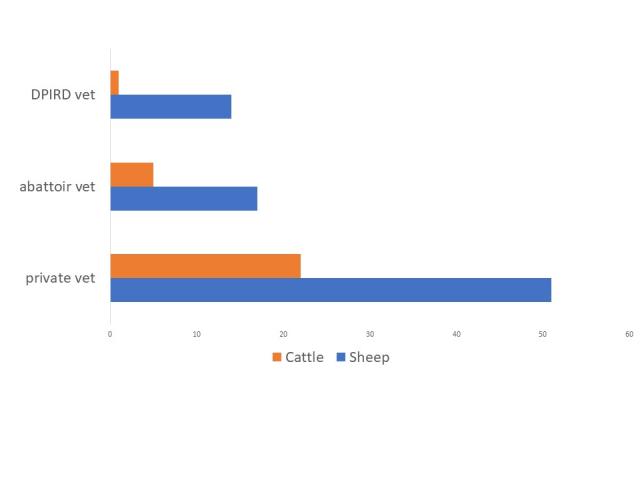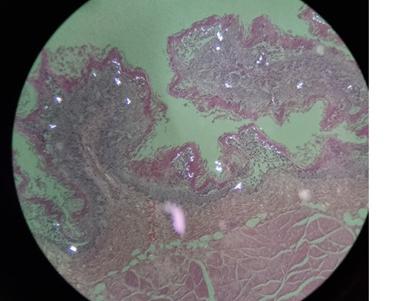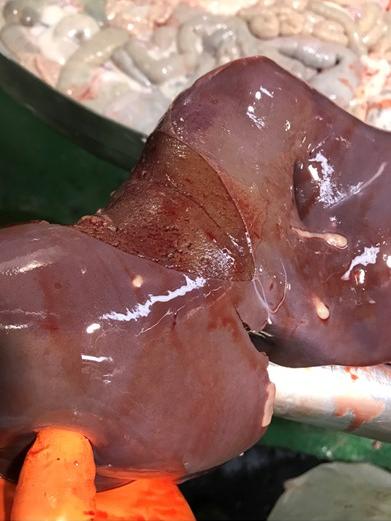Changes to Johne’s disease in cattle regulation in WA
Following confirmation of Johne’s disease (JD) (cattle strain) in a homebred cow in southern Western Australia in 2021, there will be some changes to JD regulation in WA. Export market health certification will continue to verify properties on Mycobacterium paratuberculosis (any Strain) status. JD will continue to be a nationally notifiable disease requiring anyone that suspects or diagnoses JD to report this to a DPIRD veterinary officer. DPIRD will work with industry on appropriate biosecurity practises to prevent or reduce the impact of JD on their livestock businesses. For more information about these changes, and JD prevention and management, see the following webpages:
- JD in cattle: management in WA
- JD in cattle: regulatory controls
- JD in cattle: frequently asked questions
DPIRD will be updating these pages with additional resources such as videos and will be in contact about upcoming webinars.
Livestock disease investigations
Sudden death in merino hoggets
- 5 out of 550 Merino ewe hoggets were found dead in a paddock they had been grazing for a week.
- A DPIRD field vet attended the property and performed a post-mortem to determine the cause of death, and a full range of fixed and fresh samples were submitted to the DPIRD laboratory.
- The paddock was inspected for possible causes of death. The fodder available to the sheep was mostly blue bush and clover, but there was also a significant amount of slender iceplant in the paddock.
- Histopathological examination of the kidney and reticulum resulted in a diagnosis of oxalate nephrosis and reticulitis.
- Hypocalcaemia was also detected on biochemistry of vitreous humour.
- Slender iceplant poisoning was suspected due to access to slender iceplant and the observation of oxalate crystals in the kidneys and reticulum.
- Slender iceplant contains oxalic acid, which is absorbed from the sheep’s rumen into the bloodstream where it combines with ionised calcium to form insoluble calcium oxalate crystals. As a result of the resulting hypocalcaemia, normal muscle function is reduced. Deposition of calcium oxalate crystals also causes damage to the lining of the rumen and to renal tubules.
- Signs of acute slender iceplant poisoning in livestock include dyspnoea, ataxia, collapse and death.
- Poisoning from slender iceplant normally occurs from October to April as the plant is drying out and has high levels of salt which attracts sheep. Reports of toxicity occur at other times of the year, usually when stock have not had access to it before or are introduced hungry as they will seek out the plant due to the salt content.
- Read more about slender iceplant poisoning.
- Western Australian producers can access a variety of subsidies for disease investigations in livestock that will minimise cost of calling a vet and maximise the benefits. The subsidies are designed to support WA’s market access and food safety. Read more about the subsidies available to your clients.
Liver fluke excluded from a line of condemned livers at the abattoir
- 250 of 285 lambs from a line at the abattoir were detected with draining tracts and abscesses in their livers. The liver lesions were detected through routine meat inspection.
- The livers from the affected lambs were condemned and did not enter the food chain.
- The sheep were healthy on antemortem inspection.
- The on-plant vet suspected that the lesions were due to Cycsticercus tenuicollis (bladder worm), the larval stage of the dog tapeworm Taenia hydatigena.
- The on-plant vet collected fixed and fresh samples from the condemned livers and submitted them to the DPIRD laboratory for analysis.
- The pathologist identified parasitic migratory tracts in the liver.
- Liver fluke does not occur in WA but can cause similar lesions in the liver.
- Liver fluke is a reportable disease in WA and interstate control measures are in place to prevent entry into WA.
- A DPIRD field vet and biosecurity officer attended the property to collect follow-up faecal samples from cohort animals to test for liver fluke. Results were negative on all 24 faecal samples submitted. Liver fluke was excluded.
- The vet’s provisional diagnosis of Cysticercus tenuicollis (bladder worm) was suspected to be the cause of the liver lesions.
- Bladder worm is caused by the ingestion of eggs from the dog tapeworm Taenia hydatigena. It has little effect on sheep health or production and is of no concern for human health, however it causes economic losses due to condemnation of livers and trimming of cysts in the abdominal cavity of carcases at the abattoir.
- Pet and working dogs should be wormed regularly with a tape worm treatment, and dogs should be prevented from accessing sheep carcases.
- Wild dogs and foxes can also carry the tapeworm that causes bladder worm in sheep.
- Read more in the bladder worm factsheet.
- Sheep measles (Taenia ovis) is another tapeworm parasite which can cause significant economic loss due to rejection or trimming of sheep carcases. The parasite is carried by dogs, however the larval stage in sheep muscle results in an unsightly cyst which is not acceptable for human consumption, although it poses no concern for human health. Control involves preventing transmission of the tapeworm from dogs to sheep. Read more about sheep measles.
Abortion in beef cattle
- 3 second calvers from a group of 100 cows aborted their calves over a 3-week period.
- The cows all appeared healthy with no clinical signs.
- A private vet attended the property and collected serum, EDTA and lithium heparin bloods, and fixed and fresh placenta from one of the cows that had recently aborted, and submitted the samples to the DPIRD laboratory.
- PCR testing on the blood was positive for Theileria orientalis, and further typing PCRs were positive for both Ikeda and Chitose genotypes.
- The cow also had a marked regenerative anaemia consistent with Theileria orientalis.
- The fresh placenta was tested for a range of infectious causes of abortion in cattle, including the exotic disease Brucella abortus. The negative results support market access by providing evidence of freedom from exotic and reportable diseases.
- Histopathological analysis of the placenta revealed that the cow had a mild placentitis, and Clostridium perfringens was cultured from the placenta. This finding was considered incidental and the pathologist suggested that it may have been secondary to possible retained placenta.
- Bovine anaemia due to Theileria orientalis group (BATOG) can cause abortion, anaemia and jaundice in cattle. Read more about infertility and abortion in cows.
Significant Disease Investigation program summary for the 2021 financial year
A total of 119 significant disease investigations were completed by private vets in the last financial year from July 2020 – August 2021.
Reportable diseases were excluded in 59 SDI submissions. Some submissions had multiple exclusions, a total of 105 reportable disease exclusions were performed. Reportable disease exclusions help to support market access by providing evidence that WA is free from diseases that could impact trade.
| Species | SDI submissions |
|---|---|
| Ovine | 71 |
| Bovine | 40 |
| Caprine | 5 |
| Porcine | 2 |
| Camelid | 1 |
Transmissible spongiform encephalopathy (TSE) surveillance program summary for the 2021 financial year
A total of 82 sheep brains and 28 cattle brains were submitted to the DPIRD laboratory for TSE exclusions in the last financial year from veterinary livestock disease investigations in WA. These submissions were from animals showing neurological signs that could be consistent with TSEs. These submissions benefit Australia by providing evidence of freedom from scrapie in sheep and bovine spongiform encephalopathy (BSE) in cattle.

Subsidies may be available to private vets and producers who investigate and submit appropriate samples for TSE exclusion. Contact your local field veterinary officer for more information.
Laboratory submission forms for vets can be found on the surveillance forms for vets page. Producer forms can be found here.
In spring, be on the lookout for:
| Haemonchosis (Barber’s pole worm)
| Ante-mortem
Post-mortem
|
| Selenium deficiency in lambs and calves
| Ante-mortem
Post-mortem
|


